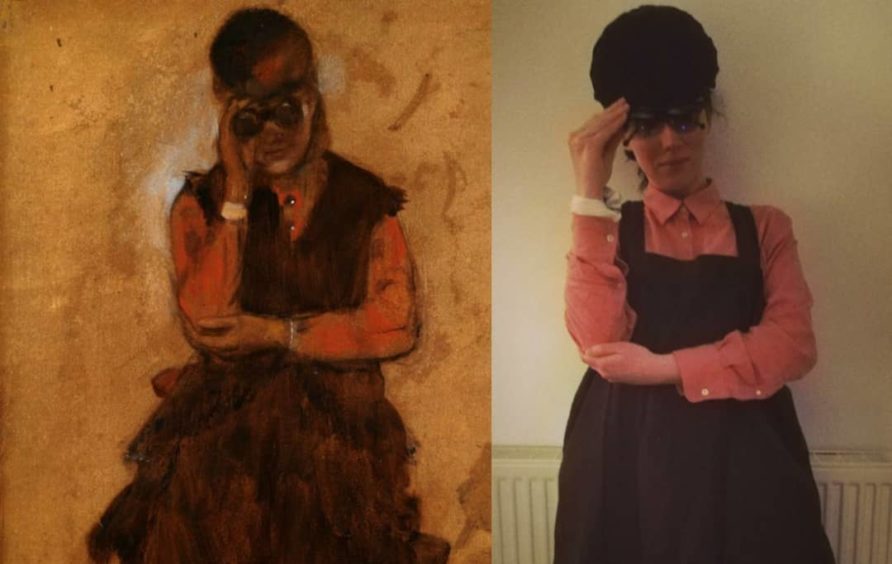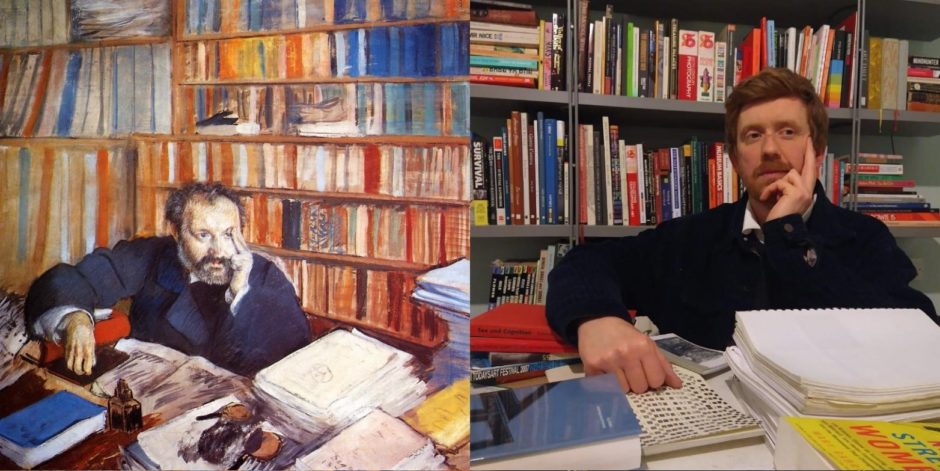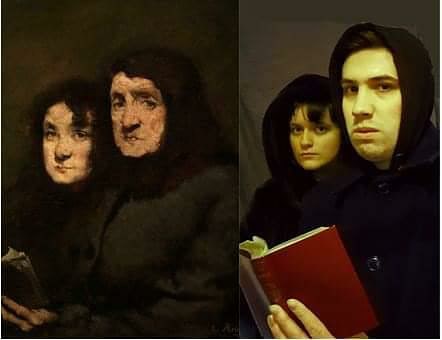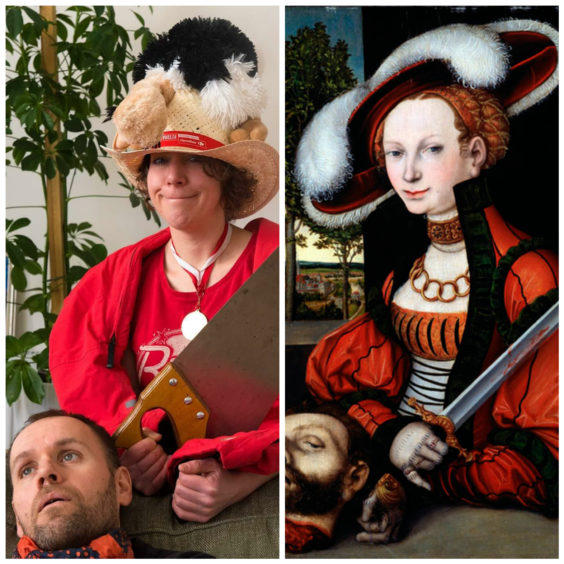Museum staff working on the refurbishment of the Burrell Collection have been recreating some of their favourite artworks during lockdown.
Using only objects found in their homes, they’ve been putting their spare time to good use in making incredible replicas of Glasgow’s famous set of treasures.
It’s also provided the opportunity to showcase the works through Glasgow Museums’ social media accounts and give some light relief to the public.
Laura Bauld, who is a project curator working on the refurbishment, said: “We noticed the Getty Museum in the US had posted a challenge to their followers to recreate an item from their collection using only the things they had at home. Some of the responses were absolutely brilliant.
“We thought it might be a good idea to do some recreations of some of the Burrell paintings. We’ve worked with these pieces for nearly four years now, we’ve come to know them and love them a little bit.
“We thought it would be a nice way to pay homage to them but also to use them online to give them a bit of a spotlight.
“Glasgow Museums has a real pride is using its objects to engage and inspire the people of the city, so this seemed like a great opportunity to do something different. We did it all in our spare time – that’s how dedicated we are!”
It was particularly challenging for Laura and her colleagues to get the angles of the paintings right, and many roped in their partners to help get the poses and likenesses spot on.
And, of course, a few alterations had to be made.
“It was tricky finding objects that can be used to represent some of the things in paintings that are 400 years old,” Laura said.
“What are you going to find in your flat that could be a sixteenth century sword? We’ve used toilet rolls, towels, I even used a sonic screwdriver toy as a sword for one of them. It’s been a real challenge but a lot of fun.”
The recreations have received a great response online, and Laura says that they’ve been an important tool for maintaining engagement while people cannot visit the museums in person.
She added: “They also hopefully promote a little bit of joy to show that we’re able to use our collections in these fun ways and hopefully bring them into people’s line of view in a different way.
“These collections belong to the people of Glasgow, so we want them to enjoy them.”
Laura, who works out of the Glasgow Museums Resource Centre in Nitshill, is looking forward to being reunited with the artworks in person sometime soon.
She said: “It’s an amazing collection, probably one of the greatest gifts given to Glasgow.
“One of the privileges of being a curator is that I can go down into the stores and see these objects.
“I’m looking forward to seeing the artworks we’ve recreated and saying hello to them in person again.
“It’s fun to recreate them, but they’re so much better seen in the flesh.”
Seeing double
Here, Laura explains the history of some of the paintings, and how her colleagues have recreated them
Woman Looking Through Field Glasses

This painting by Edward Degas shows a woman dressed in 19th century costume and she’s looking through field glasses, binoculars you’d use at the theatre.
We think this woman’s probably actually at the horse-racing. Rather than looking at the horses, she’s looking directly at the viewer.
It’s an almost unnerving painting because we’re used to, in art, looking at the subject of the painting and not having them stare back at us. Who’s looking at who?
My colleagues recreated this one and they’ve got the costume down really well! They’ve used sunglasses for the binoculars, and my favourite detail is that they didn’t have a 19th century bonnet at home – because why would you – so they’ve used their bicycle helmet!
Portrait of Edmond Duranty

Duranty was an art critic and novelist in the 19th century who was great friends with Degas.
He’s painted in his study surrounded by his books and his pamphlets.
My colleague got her partner to play the part of Duranty because they were a great lookalike!
I think it’s a great recreation, they’ve really thought about the details, including the red books Duranty has his arm propped on.
They’ve really got that pensive pose he’s got too.
Judith with the Head of Holofernes
My favourite is by our photographer. Her job has been to photograph all of the objects, so she knows them really well.
This was painted in 1530 by Lucas Cranach the elder and it shows Judith, who was a heroine of the apocrypha in the Bible.
In the story, her town is besieged by Holofernes and his troops. So to free her town, Judith went down to meet him, dressed up in beautiful clothes, brought him wine and food, seduced him and just when he let his guard down, she whipped out a sword and cut off his head and saved her town.
This painting shows Judith in her resplendent finery holding her sword, with the head of Holofernes in front of her.
My colleague has again drafted in her partner to play the role of Holofernes – I don’t know how he felt about that, but he’s pulled off the facial expression really well!
Rather than using a sword, there’s a saw, which she actually plays as a musical instrument.

Enjoy the convenience of having The Sunday Post delivered as a digital ePaper straight to your smartphone, tablet or computer.
Subscribe for only £5.49 a month and enjoy all the benefits of the printed paper as a digital replica.
Subscribe © CSG CIC Glasgow Museums Collection
© CSG CIC Glasgow Museums Collection © Iona Shepherd / CSG CIC Glasgow Museums Collection
© Iona Shepherd / CSG CIC Glasgow Museums Collection